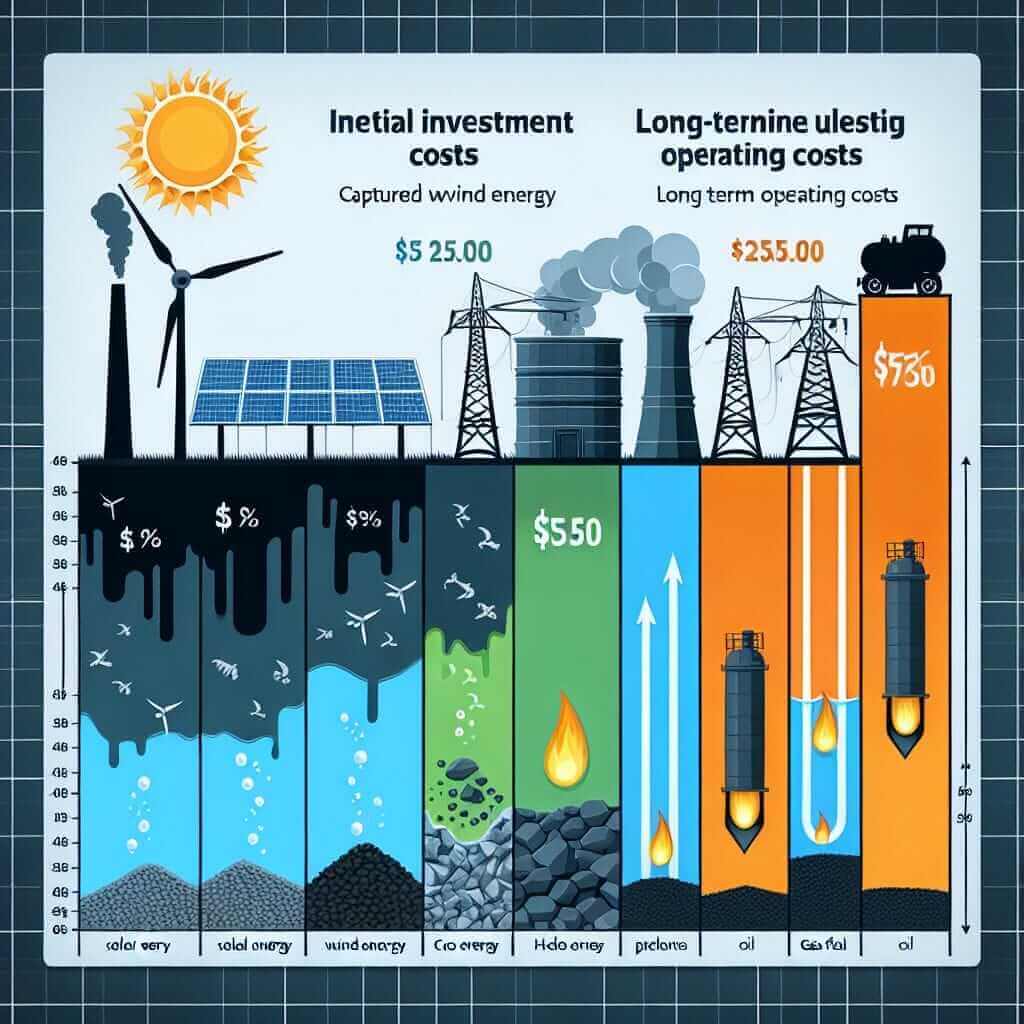Renewable energy and its influence on energy prices is an increasingly vital topic in today’s world, reflected in its consistent presence in IELTS Writing Task 2 prompts. Given the global emphasis on sustainability and environmental conservation, candidates can expect such topics to gain even more prominence in future exams. This article delves into real past IELTS prompts and provides a meticulously crafted model essay, complete with analysis and key vocabulary.
Real Past IELTS Prompts
- Many people believe that renewable energy sources such as wind and solar power should replace fossil fuels. To what extent do you agree or disagree?
- Some people think that the increasing use of renewable energy is leading to higher energy prices. Discuss both views and give your opinion.
- The development of renewable energy technology is crucial for the world. Discuss the advantages and disadvantages of this.
Selected Prompt for Model Essay
Some people think that the increasing use of renewable energy is leading to higher energy prices. Discuss both views and give your opinion.
Analysis of the Prompt
This prompt presents a discussion essay requiring candidates to explore both perspectives on renewable energy’s impact on energy prices and convey their own opinion. Key terms to consider:
- Increasing use of renewable energy
- Higher energy prices
- Discuss both views
- Give your opinion
Model Essay
Introduction
Renewable energy sources such as solar, wind, and hydroelectric power are increasingly being adopted worldwide as an alternative to fossil fuels. However, a debated issue is whether this shift leads to higher energy prices. This essay will examine both viewpoints and provide an opinion on whether the transition to renewable energy results in more expensive energy.
Body Paragraph 1
One perspective is that the increased utilization of renewable energy spurs higher energy costs. Proponents argue that the initial investment in renewable energy infrastructure is substantially expensive. Solar panels, wind turbines, and other related technologies require significant up-front expenditures for development, installation, and maintenance. Furthermore, renewable energy sources often face volatility; for instance, solar and wind power depend on weather conditions, which can fluctuate and thus impact energy availability. These variables can drive prices higher as the technology and infrastructure stabilize to become more cost-efficient.
Body Paragraph 2
Conversely, advocates for renewable energy assert that it ultimately results in lower energy prices over time. They contend that once the initial costs are amortized, the ongoing expenses are minimal compared to fossil fuels, which have continuous mining, transportation, and environmental costs. Renewable energy sources are abundant and, theoretically, inexhaustible. Solar energy, for example, can be harnessed indefinitely with negligible marginal costs once the infrastructure is established. Furthermore, technological advancements and economies of scale significantly reduce the per-unit cost of renewables, suggesting a potential long-term downward trend in energy prices.

Opinion
In my opinion, while the initial phase of transitioning to renewable energy may be marked by higher costs due to infrastructure investment and technological adjustments, the long-term benefits far outweigh these initial expenditures. As the technology matures and more efficient systems are developed, renewable energy is likely to become not only more cost-effective but also more reliable and environmentally sustainable.
Conclusion
In conclusion, although the initial use of renewable energy can lead to higher energy prices due to infrastructure and technology costs, the overall trend indicates a potential reduction in energy prices over time. The sustainable and inexhaustible nature of renewable energy sources, combined with continual technological advancements, suggests that the long-term impact will be favorable for both the economy and the environment.
Word Count: 357
Insights for Writing
Vocabulary and Phrasing:
- Initial investment: The first costs incurred when setting up renewable energy infrastructures.
- Volatility: The likelihood of rapid and unpredictable changes, such as weather affecting solar and wind power.
- Amortized: Gradually written off the initial cost over time.
- Economies of scale: Cost advantages achieved when production becomes efficient.
Grammar Points:
- Conditional Sentences: Used to discuss potential future trends (e.g., “once the initial costs are amortized”).
- Relative Clauses: Provide additional information (e.g., “which can fluctuate and thus impact energy availability”).
Key Vocabulary Terms
- Infrastructure (n) /ˈɪnfrəˌstrʌkʧər/: The basic physical systems and structures needed for the operation of a society or enterprise.
- Amortized (v) /əˈmɔrtaɪzd/: Gradually write off the initial cost of (an asset) over a period.
- Volatility (n) /ˈvɒlətɪlɪti/: Liability to change rapidly and unpredictably, especially for the worse.
- Proponents (n) /prəˈpoʊnənts/: People who advocate for a theory, proposal, or course of action.
- Expenditures (n) /ɪkˈspɛndɪʧərz/: The action of spending funds.
Conclusion
Renewable energy’s influence on energy prices is complex, with both short-term and long-term considerations. As renewable technology evolves, it is crucial to evaluate its economic impacts in conjunction with its environmental benefits. Future IELTS candidates should consider similar topics reflecting global sustainability trends in their preparations. Potential future prompts may include:
- The role of government subsidies in promoting renewable energy.
- Comparing the economic impacts of renewable energy versus fossil fuels.
- The social benefits of transitioning to renewable energy sources.
By mastering such topics, candidates can substantially enhance their writing skills for the IELTS test, moving towards higher band scores.